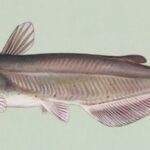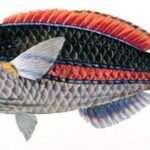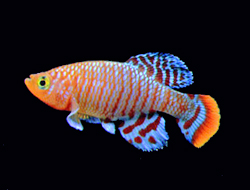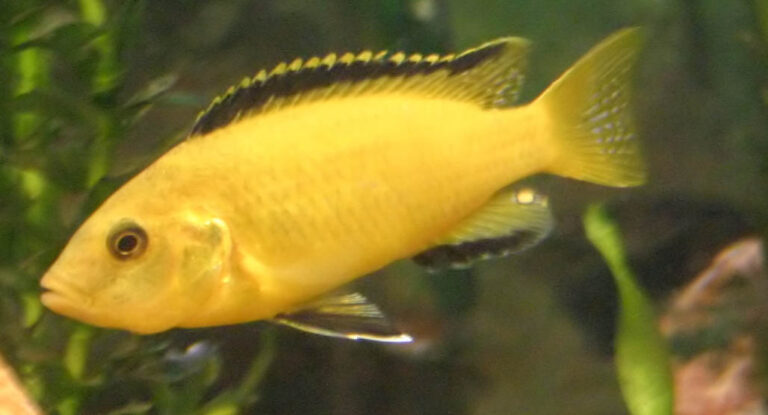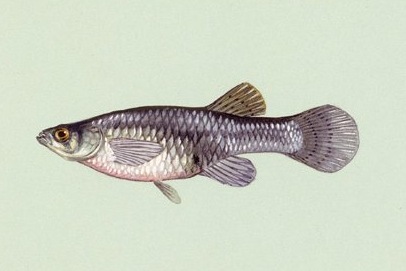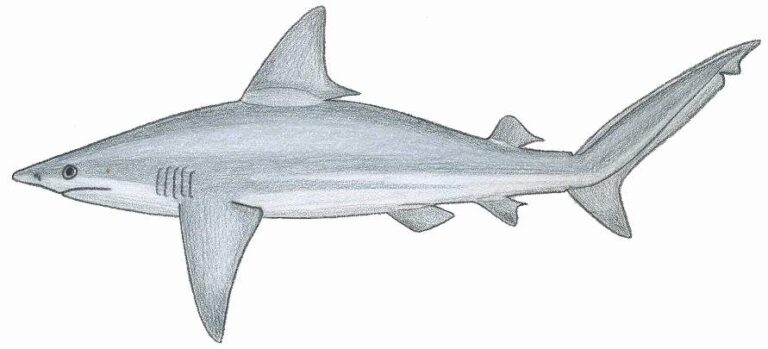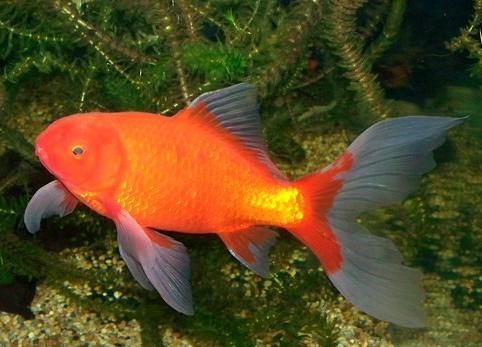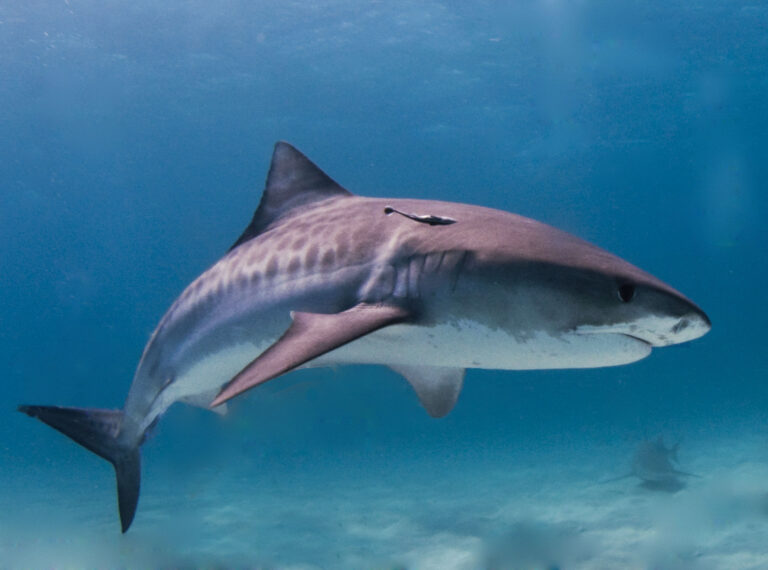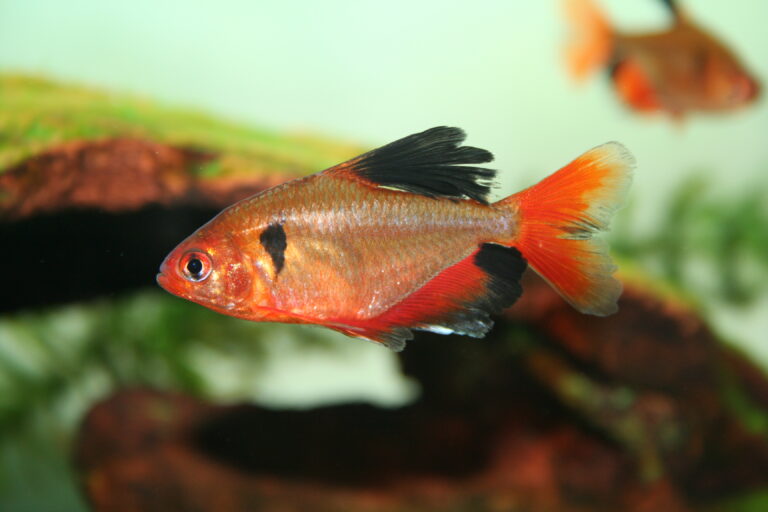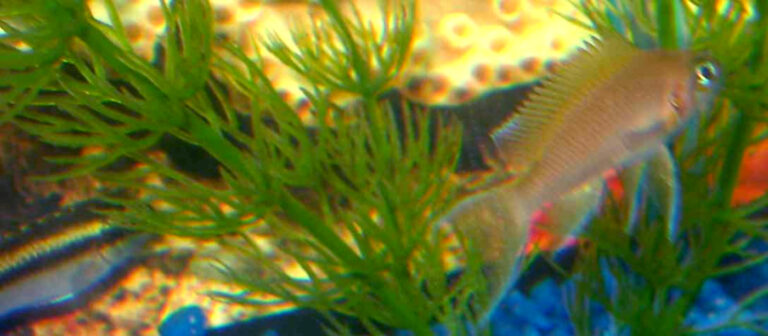Double Tail Betta
By Ryan Maron | Last Modified: June 11, 2025
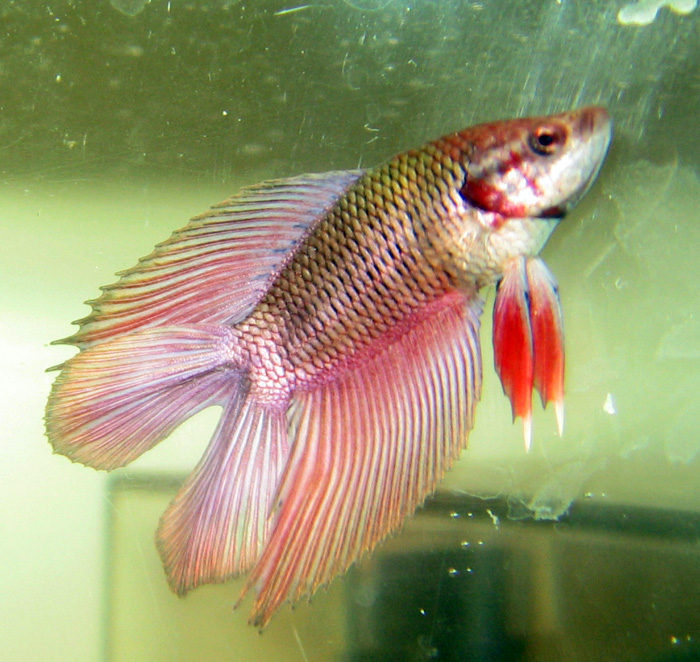
The Double Tail Betta, scientifically known as Betta splendens, represents one of the most distinctive and captivating variants within the diverse world of ornamental fish breeding. This remarkable freshwater fish showcases an extraordinary genetic mutation that results in a split caudal fin, creating the illusion of two separate tail fins rather than the traditional single tail structure. Beyond its striking aesthetic appeal, the Double Tail Betta plays a significant role in the aquarium trade and has contributed substantially to our understanding of selective breeding practices in ornamental fish culture.
The Double Tail Betta serves as both a testament to human selective breeding achievements and a fascinating example of how genetic variations can be preserved and enhanced through careful cultivation. These fish have become cornerstone species in the aquarium hobby, influencing breeding programs worldwide and establishing themselves as prized specimens among both novice and experienced aquarists. Their unique fin structure not only distinguishes them visually but also affects their swimming patterns and behavioral adaptations within aquatic environments.
| Feature | Details |
|---|---|
| Common Name | Double Tail Betta |
| Scientific Name | Betta splendens |
| Family | Osphronemidae |
| Typical Size | 5-7 cm (2-2.75 inches), 2-8 grams |
| Habitat | Shallow freshwater environments |
| Diet | Omnivorous – insects, larvae, plant matter |
| Distribution | Southeast Asia (cultivated worldwide) |
| Conservation Status | Vulnerable (wild populations) |
Taxonomy & Classification
The Double Tail Betta belongs to the family Osphronemidae, commonly known as gouramis, within the order Anabantiformes. This taxonomic classification places them among the labyrinth fish, a group characterized by their specialized breathing apparatus that allows them to extract oxygen directly from atmospheric air. The species Betta splendens was first scientifically described by Charles Tate Regan in 1910, though the fish had been known to local populations in Southeast Asia for centuries prior to formal classification.
Within the genus Betta, which encompasses over 70 recognized species, B. splendens stands out as the most extensively studied and commercially bred variant. The Double Tail mutation represents a specific phenotypic expression within this species, resulting from selective breeding practices that have isolated and amplified particular genetic traits. This variant maintains all the fundamental characteristics of the species while exhibiting the distinctive split caudal fin structure that defines its classification.
The genetic basis for the double tail trait involves a recessive gene that affects fin development during embryonic stages. This mutation influences not only the caudal fin structure but often correlates with broader dorsal and anal fins, creating a more symmetrical overall appearance. Understanding these genetic mechanisms has contributed significantly to broader research in developmental biology and selective breeding methodologies across multiple fish species.
Physical Description
The Double Tail Betta exhibits a distinctive morphological profile that immediately distinguishes it from single-tail variants of the same species. The most prominent feature is the split caudal fin, which appears as two separate tail sections divided from the base, creating a butterfly-like appearance when fully extended. This unique fin structure typically measures between 15-20 millimeters in length on mature specimens, with individual variations depending on genetic lineage and environmental factors.
The body structure of Double Tail Bettas tends to be slightly more compact than their single-tail counterparts, with a typical standard length ranging from 50-70 millimeters for adult specimens. Males generally display more vibrant coloration and longer fins, while females maintain a more subdued appearance with shorter fin extensions. The dorsal and anal fins in double tail variants often show increased ray counts, contributing to their enhanced fin spread and more elaborate display behaviors.
Coloration patterns in Double Tail Bettas span an extensive spectrum, including solid colors, bi-colors, marbles, and complex patterns developed through selective breeding programs. Common color variations include steel blue, royal blue, red, yellow, white, black, and various metallic sheens. The scales typically number between 32-34 along the lateral line, with cycloid scale structure providing the characteristic smooth texture and reflective properties that enhance their visual appeal under aquarium lighting conditions.
Habitat & Distribution
The natural habitat of Betta splendens encompasses the shallow freshwater environments of Southeast Asia, particularly within the Mekong River basin spanning Thailand, Cambodia, Vietnam, and Laos. These regions feature slow-moving or stagnant waters including rice paddies, shallow ponds, drainage ditches, and floodplain areas characterized by dense vegetation and fluctuating water levels throughout seasonal cycles.
Wild populations of Double Tail Bettas have become increasingly rare due to habitat destruction and hybridization with escaped domestic varieties. The original ecosystems typically maintain water temperatures between 24-30°C (75-86°F) with pH levels ranging from 6.0-7.5 and relatively soft water conditions. These environments experience significant seasonal variations, including drought periods that concentrate fish populations in reduced water volumes and monsoon seasons that dramatically expand available habitat areas.
Modern distribution of Double Tail Bettas extends globally through the aquarium trade, with established populations in numerous countries where they have been introduced either intentionally or through aquarium releases. However, these introduced populations rarely survive long-term due to temperature constraints and ecological competition. The species demonstrates remarkable adaptability to various water conditions, contributing to their success in captive breeding programs and commercial aquaculture operations worldwide.
Diet & Feeding Behavior
Double Tail Bettas exhibit omnivorous feeding behavior with a strong preference for protein-rich prey items, reflecting their ancestral adaptation to insect-abundant environments. Their natural diet consists primarily of small invertebrates including mosquito larvae, bloodworms, daphnia, cyclops, and various terrestrial insects that fall onto the water surface. Plant matter comprises a secondary dietary component, typically consisting of algae, small aquatic plants, and organic detritus.
The feeding strategy of Double Tail Bettas involves surface and mid-water foraging, utilizing their upward-angled mouth structure to capture prey efficiently from multiple water column levels. Their feeding behavior demonstrates territorial characteristics, with individuals establishing feeding zones that they defend against conspecifics and other small fish species. The modified fin structure of double tail variants can slightly reduce their swimming efficiency, requiring adaptation in hunting techniques compared to single-tail relatives.
In captive environments, Double Tail Bettas readily accept various commercial foods including high-quality pellets, flakes, frozen foods, and live prey items. Optimal nutrition requires protein levels between 35-40% with moderate fat content and minimal carbohydrate inclusion. Feeding frequency typically ranges from once to twice daily, with portion sizes adjusted to prevent overfeeding and maintain water quality. The species demonstrates strong food recognition abilities and can be trained to respond to feeding cues and schedules.
Behavior & Adaptations
The behavioral profile of Double Tail Bettas reflects their evolutionary heritage as territorial, surface-dwelling fish adapted to resource-limited environments. Males exhibit pronounced aggressive tendencies toward conspecifics, particularly other males, engaging in elaborate threat displays involving fin spreading, gill flaring, and intense coloration enhancement. These displays serve both territorial defense and mate attraction functions, with the enhanced fin structure of double tail variants providing more dramatic visual impact during behavioral interactions.
The labyrinth organ represents the most significant physiological adaptation in Double Tail Bettas, allowing them to survive in oxygen-depleted waters that would be lethal to most other fish species. This specialized respiratory structure enables direct atmospheric oxygen absorption through a complex network of highly vascularized tissue located above the gills. This adaptation proves particularly valuable in their natural habitat where water oxygen levels fluctuate dramatically due to organic decomposition and temperature variations.
Social behavior in Double Tail Bettas demonstrates complex patterns including temporary pair bonding during breeding periods and hierarchical establishment in multi-fish environments. The species exhibits remarkable intelligence for fish of their size, demonstrating learning capabilities, memory retention, and problem-solving behaviors. Their territorial nature requires careful consideration in aquarium settings, though females and juveniles typically display reduced aggression levels compared to mature males.
Reproduction & Life Cycle
The reproductive cycle of Double Tail Bettas follows a complex pattern of courtship, nest building, and parental care that distinguishes them from many other freshwater fish species. Males construct bubble nests at the water surface using saliva-coated air bubbles, creating floating platforms that serve as egg repositories and nursery areas for developing fry. These nests typically measure 5-10 centimeters in diameter and require 24-48 hours for completion under optimal conditions.
Courtship behavior involves elaborate displays where males showcase their enhanced finnage through spreading, color intensification, and ritualized swimming patterns designed to attract females. The breeding process requires careful timing, as females must be receptive and males must have established secure nesting sites. Spawning typically occurs beneath the bubble nest, with males wrapping around females to facilitate egg release and fertilization simultaneously.
The reproductive success of various Betta fish varieties depends heavily on environmental conditions and genetic compatibility. Double Tail Bettas typically produce 100-500 eggs per spawning event, with fertilization rates exceeding 80% under optimal conditions. Male parental care continues for 7-10 days post-hatching, during which time the male guards the nest, retrieves fallen fry, and maintains nest structure. Fry become free-swimming after approximately 72 hours and reach sexual maturity within 3-4 months under favorable conditions.
Predators & Threats
In their natural habitat, Double Tail Bettas face predation pressure from various aquatic and semi-aquatic species including larger fish, amphibians, reptiles, and birds. Primary aquatic predators include snakeheads (Channidae), larger cyprinids, and predatory catfish species that inhabit the same shallow water environments. The enhanced fin structure of double tail variants can potentially increase vulnerability to predation by reducing escape swimming efficiency compared to wild-type individuals.
Avian predators pose significant threats to surface-dwelling Bettas, particularly during their frequent trips to the water surface for atmospheric breathing. Herons, kingfishers, and other piscivorous birds commonly hunt in the shallow waters where Bettas naturally occur. The bright coloration and elaborate fins of Double Tail Bettas may increase their visibility to aerial predators, though this same ornamentation serves important intraspecific communication functions.
Anthropogenic threats represent the most significant challenge to wild Betta populations, including habitat destruction through agricultural expansion, water pollution from pesticides and industrial runoff, and collection pressure for the international aquarium trade. Climate change impacts on Southeast Asian water systems continue to alter traditional habitat conditions, while introduced species compete for resources and hybridize with native populations. The genetic isolation required to maintain double tail characteristics makes these populations particularly vulnerable to genetic bottlenecks and reduced adaptive capacity.
Conservation Status
The International Union for Conservation of Nature (IUCN) currently classifies wild Betta splendens populations as Vulnerable, reflecting significant population declines and habitat loss throughout their native range. While commercially bred Double Tail Bettas exist in enormous numbers globally, wild populations bearing the authentic genetic lineages face mounting conservation pressures that threaten their long-term survival.
Habitat preservation efforts in Southeast Asia focus on maintaining rice paddy ecosystems and protecting seasonal wetlands that serve as critical breeding and refuge areas for wild Betta populations. Conservation programs emphasize sustainable agricultural practices that maintain water quality and preserve the shallow water habitats essential for Betta reproduction and survival. International cooperation between Thailand, Cambodia, Vietnam, and Laos has established several protected areas specifically designed to conserve native fish biodiversity.
Captive breeding programs play a dual role in Double Tail Betta conservation, maintaining genetic diversity while potentially threatening wild populations through escapees and hybridization events. Responsible breeding practices emphasize maintaining pure genetic lines, preventing releases into natural waterways, and supporting conservation research through genetic analysis and breeding technique development. The economic value of the aquarium trade provides both funding opportunities for conservation efforts and incentives for sustainable management of wild populations.
Human Interaction
The relationship between humans and Double Tail Bettas spans centuries of cultural significance in Southeast Asia, where these fish traditionally served both ornamental and practical purposes in local communities. Historical records indicate that Siamese people kept and bred Bettas for fighting contests, with selective breeding practices gradually developing the elaborate fin forms that characterize modern ornamental varieties.
The contemporary aquarium trade has transformed Double Tail Bettas into one of the most popular and economically important ornamental fish species worldwide. Annual production numbers exceed several million individuals, with breeding operations spanning multiple continents and generating significant economic activity in both developing and developed nations. The species has become a gateway fish for many aquarium enthusiasts, introducing millions of people to fishkeeping as a hobby.
Scientific research involving Double Tail Bettas contributes to multiple fields including genetics, developmental biology, behavior, and aquaculture methodology. Their relatively simple husbandry requirements, short generation times, and well-characterized genetics make them valuable model organisms for studies investigating fin development, color inheritance, and behavioral evolution. Educational programs frequently utilize Bettas to teach concepts related to selective breeding, genetics, and responsible pet ownership.
Interesting Facts
The unique split-tail characteristic in Double Tail Bettas results from a single recessive gene that affects fin bud development during embryonic stages, demonstrating how minor genetic variations can produce dramatic phenotypic changes. This mutation typically correlates with increased fin ray counts in other fins, creating more symmetrical overall proportions compared to single-tail variants.
Double Tail Bettas possess the remarkable ability to recognize human faces and can be trained to perform simple behaviors including swimming through hoops, following fingers along glass surfaces, and responding to feeding signals. Their memory capacity extends up to three months, allowing them to maintain learned behaviors and recognize familiar individuals over extended periods.
The labyrinth organ in Double Tail Bettas functions so efficiently that they can survive for short periods in extremely shallow water, including temporary pools that would be uninhabitable for gill-breathing fish. This adaptation has enabled them to colonize temporary habitats and survive seasonal droughts that eliminate competing fish species from shared environments.
Temperature fluctuations significantly influence the sex determination process in developing Double Tail Betta embryos, with higher temperatures favoring male development and cooler conditions promoting female characteristics. This environmental sex determination mechanism provides flexibility in breeding programs and demonstrates the complex interaction between genetics and environmental factors in fish development.
Frequently Asked Questions
How do Double Tail Bettas differ from regular Bettas in terms of care requirements?
Double Tail Bettas require identical care to single-tail varieties, including water temperatures between 76-82°F, pH levels of 6.5-7.5, and regular feeding schedules. However, their enhanced fin structure may make them slightly more susceptible to fin rot and requires closer attention to water quality maintenance. Their reduced swimming efficiency compared to single-tail variants may also necessitate gentler water flow and more accessible feeding locations.
Can Double Tail Bettas be bred to produce more double-tail offspring?
Yes, the double-tail trait follows predictable genetic inheritance patterns. Breeding two double-tail parents typically produces 100% double-tail offspring, while crossing a double-tail with a single-tail results in approximately 50% double-tail and 50% single-tail fry. The trait is recessive, meaning both parents must carry the gene for it to appear in offspring.
Are Double Tail Bettas more aggressive than other Betta varieties?
Aggression levels in Double Tail Bettas remain consistent with other Betta splendens varieties, as temperament is not directly linked to fin type. Male Double Tail Bettas display the same territorial behavior as their single-tail counterparts, while females typically exhibit similar moderate aggression levels regardless of fin structure. Individual personality variations occur within all Betta types.
Do Double Tail Bettas have shorter lifespans due to their modified fins?
Double Tail Bettas maintain typical Betta lifespans of 2-4 years when provided with appropriate care. Their fin structure does not inherently reduce longevity, though the increased surface area may require more vigilant monitoring for fin-related health issues. Proper nutrition, water quality maintenance, and disease prevention ensure normal lifespans regardless of tail type.
Conclusion
The Double Tail Betta represents a remarkable achievement in selective breeding while highlighting the delicate balance between human intervention and natural conservation needs. These distinctive fish serve as both beloved aquarium inhabitants and important genetic resources that contribute to our understanding of fish development and breeding methodologies. Their continued popularity ensures ongoing research opportunities while supporting conservation efforts for their wild relatives in Southeast Asian ecosystems.
Share The Article:
More Fish Species:
-
Killifish
Killifish represent one of the most diverse and ecologically significant groups of small freshwater and brackish water fish, comprising…
-
Yellow Lab Cichlid
The Yellow Lab Cichlid (*Labidochromis caeruleus*) stands as one of Africa’s most recognizable freshwater fish species, distinguished by its…
-
Mosquito Fish
The Mosquito Fish (Gambusia affinis) stands as one of North America’s most ecologically significant freshwater species, despite its diminutive…
-
Sandbar Shark
The Sandbar Shark (Carcharhinus plumbeus) stands as one of the most recognizable and ecologically significant members of the requiem…
-
Comet Goldfish
The Comet Goldfish (Carassius auratus) stands as one of the most recognizable and widely distributed freshwater fish species in…
-
Largemouth Bass
The Largemouth Bass, scientifically known as *Micropterus salmoides*, stands as one of North America’s most iconic freshwater gamefish and…
Discover
-
7 Best Places to Go Fishing in Florida (2025 Guide for All Anglers)
Florida’s known as the Fishing Capital of the World for good reason. With over 7,700 lakes, 10,550 miles of…
-
How to Use a Spinnerbait: Complete Guide for Beginners
In my three decades of fishing experience, I’ve found few lures as versatile and effective as the humble spinnerbait….
-
Tiger Shark
The Tiger Shark (Galeocerdo cuvier) represents one of the ocean’s most formidable apex predators, earning its distinctive name from…
-
Fly Fishing vs Spinning Reels: Choosing the Right Technique
If there’s one debate that never seems to end in fishing circles, it’s fly fishing versus spinning gear. I’ve…
-
Great White Shark
The Great White Shark (*Carcharodon carcharias*) stands as one of the ocean’s most formidable apex predators, commanding respect and…
-
Fishing with Kids: How to Make It Fun and Educational
I’ll never forget the look on my son Tommy’s face when he caught his first bluegill. He was six,…
Discover
-
Beluga Fishing: Techniques That Actually Work (Not Theory)
When it comes to beluga fishing, there’s a world of difference between what you read in theory and what…
-
Green Terror Cichlid
The Green Terror Cichlid stands as one of South America’s most formidable and visually striking freshwater fish species, commanding…
-
How to Fish with Dry Flies: Beginner’s Guide to Surface Action
There’s something almost magical about watching a trout rise to sip your dry fly from the surface. I still…
-
Colorful Tetra Fish Types Every Aquarium Owner Should Know
When I set up my first freshwater aquarium years ago, tetras quickly became my go-to fish. These colorful little…
-
Serpae Tetra
The Serpae Tetra (Hyphessobrycon eques) stands as one of South America’s most recognizable freshwater aquarium species, distinguished by its…
-
Kribensis Cichlid
The Kribensis Cichlid (Pelvicachromis pulcher) stands as one of West Africa’s most remarkable freshwater fish species, captivating aquarists and…


